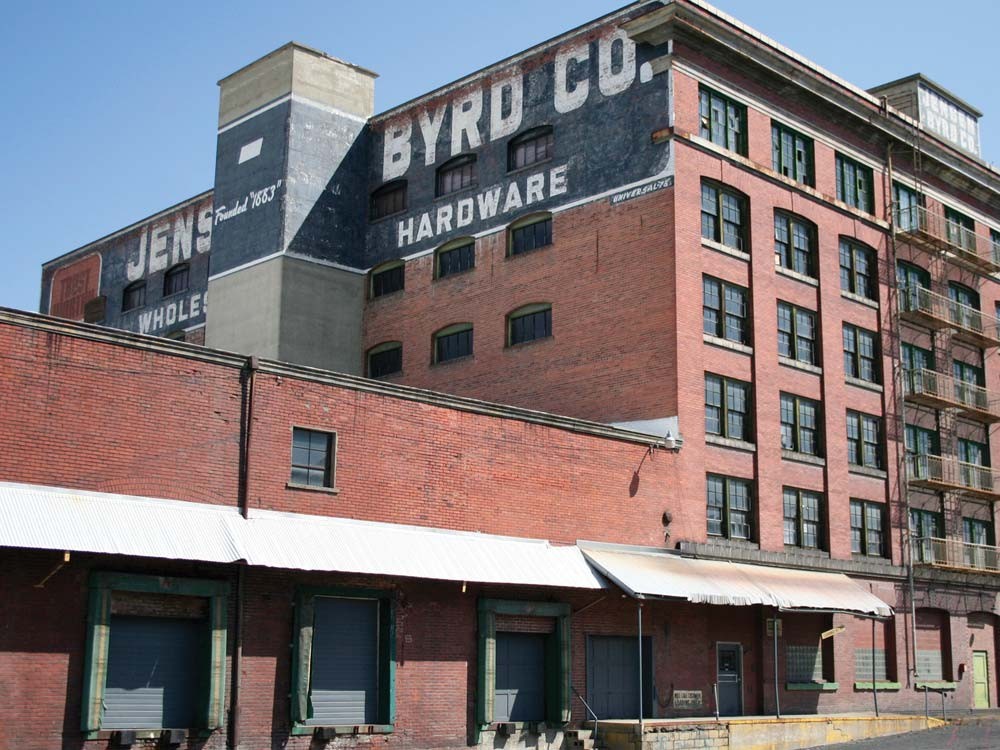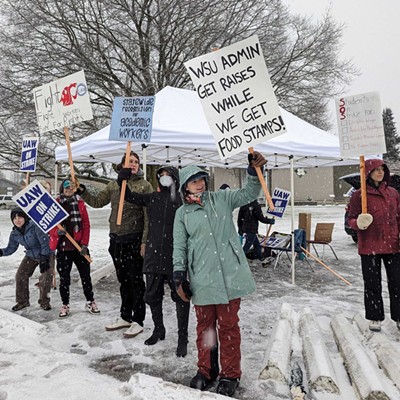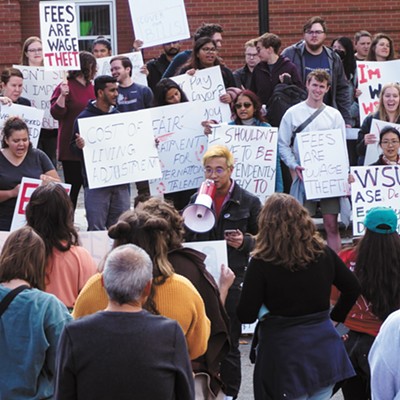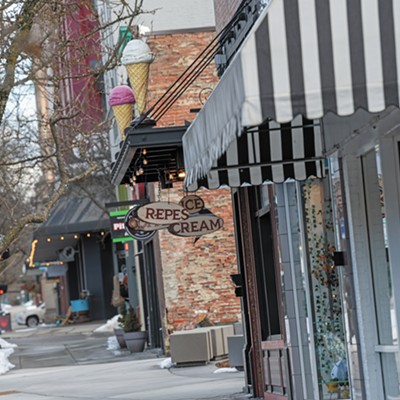The torn-up streets and sidewalks in Spokane’s University District are just temporary scratches on the area’s surface.
The Jensen-Byrd warehouse is a permanent bruise.
Washington State University officials have decided to sell the building, and they don’t care what happens to it afterward. As efforts continue to beautify the area and make room for a new medical school, the university is looking to sell Jensen-Byrd in order to help fund those efforts.
After two failed attempts at a public-private partnership for the Jensen-Byrd building in less than a decade, WSU plans to list the six-story warehouse at 131 E. Main Avenue next month. And it won’t place any limits on how the buyer uses it.
The WSU Board of Regents approved the money from the sale of the building to “go toward the medical program in Spokane” but didn’t give any more specific directions, says Barb Chamberlain, spokeswoman for WSU-Spokane.
“The important thing is the regents made the statement that these resources will stay in Spokane and there is a commitment to expanding health sciences,” Chamberlain says. “There are a lot of ways this money could be utilized.”
The decision about whether the funds from the building will go toward planning or building costs — or some other aspect of expanding medical education in Spokane — won’t be made until the university sells the building, she says.
Appraisers are currently assessing the building for an updated value, but it was last valued in 2007 at $2.2 million, says Mel Taylor, WSU’s executive director of real estate and local relations. Taylor says he expects the building’s current value to be about the same.
Rich Hadley, president and CEO of Greater Spokane Inc., who has lobbied the state legislature for funding for the new medical complex, says that while $2 million might seem trivial when compared to the estimated $70 million price tag of the health education center, it could be instrumental in making the facility a reality.
While historic-preservation advocates have argued for requiring the building’s buyer to preserve the building or register it with the National Register of Historic Places, WSU officials decided against putting any limitations on the century-old building’s use.
The university requested proposals in 2005 and 2008 for purchase and development of the building, with restrictions on how buyers would be allowed to use the property. Neither attempt was successful, leaving an open sale the university’s only option, Taylor says.
“Once the building is for sale, there are no contingencies on it,” Taylor says. “Hopefully, whoever buys [it] will take into consideration what the public feels, but that is up to them, not us.”
The university has received some interest in the building but can’t engage those potential buyers until the building is listed, Taylor says.
Hadley says the old building provides some limitations but isn’t hopeless. He has heard some proposals for the building, including plans for an entrepreneurial incubator to house business startups, but has yet to see a proposal with a solid funding plan.
“The building itself will take lot of work to be very practical for a university purpose or a business purpose,” he says. “It would take a very creative solution and a fair amount of money to put it into one of those kinds of uses.”























